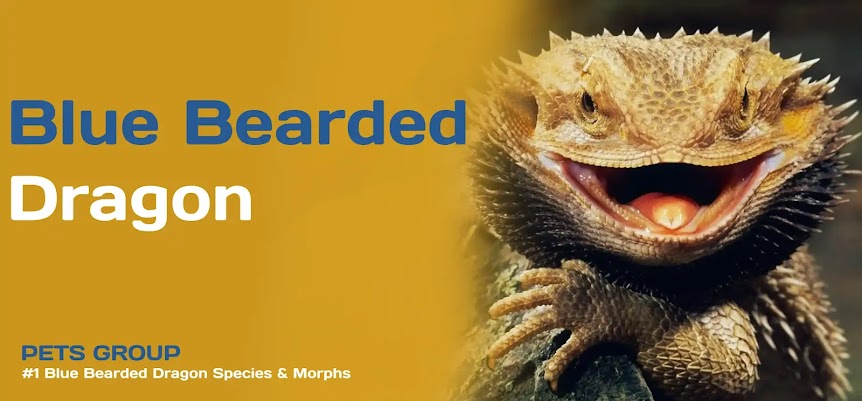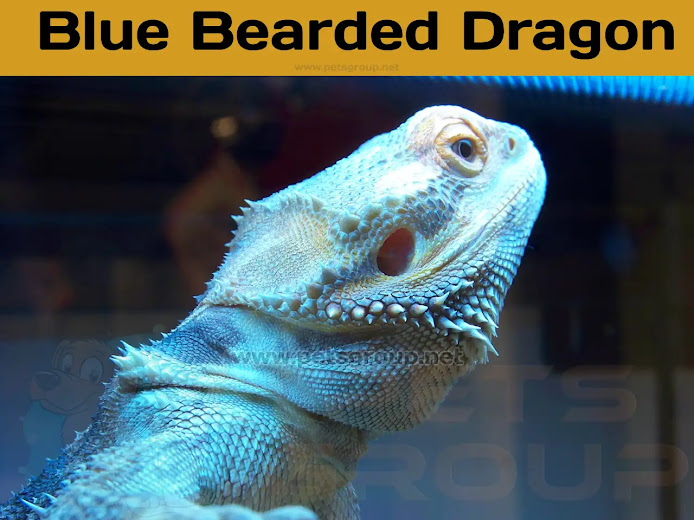Blue Bearded Dragons are lizards native to Australia, which are kept as pets. These reptiles got their name because of their behavior and the shape of their skin, especially in the part under their throats, which looks like a snake. Bearded dragons eat greens and insects. Bearded dragons are reptiles and one of the most popular pets.
Bearded dragons (also known as dracaena) are found naturally in Australia, but bearded dragons are kept as exotic pets in many places around the world.
Bearded dragons depend on insects, crickets, and worms for their diet. Like all reptiles, they enjoy spending their days on rocks in the sunlight until nightfall, when they are among the most active animals.
The bearded dragon is known to be a docile species and is as gentle as a lizard, thus it is an exotic and popular pet for children. Bearded dragons can grow up to 24 inches in length but they have long tails, which makes the bearded dragon rather small in body size as a lizard.
The bearded dragon is one of the best lizard pets. It is known for being a permanently alert animal. Bearded dragons are prone to interesting behaviors, as they may raise their front legs in the air.
Bearded dragon Diet:
Because the bearded dragon is an omnivore, it needs a balanced diet of meat and vegetable matter. The baby turtle eats small insects, in addition to eating more plant matter.
The dragon's diet is about 80% insects and 20% vegetables. And every adult dragon should be fed 2-3 times daily. The plant material in the diet should make up about 20% of the diet and should consist of green leafy vegetables, other vegetables, and fruit.
Blue Bearded Dragon Size:
blue bearded dragon is about 4 inches long; Large adults can reach nearly 2 feet in length.
Blue Bearded Dragon Age:
The average age of a bearded dragon is between six and 10 years.
Blue Bearded Dragon Habitat:
Bearded Dragon Environment temperatures:
Bearded dragons are a favorite of forest, desert, and dry environment temperatures, and require additional heat for proper digestion. They prefer between 78-88°F during the day and 70°F at night. If reptiles are cold, they cannot carry out the process of digesting food nutritionally and are more susceptible to disease.
Water and moisture:
Although blue bearded dragons shed most of their water requirements from the food they eat, they prefer to have fresh drinking water available at all times in a shallow bowl so they cannot tip over.
Proper humidity is essential for them. Especially during the winter months when the humidity is low. You will need to clean the containers and replace the water regularly, as they may urinate or defecate in the water. In fact, water usually helps them defecate and treat constipation.
Blue Bearded dragons' life cycle:
Blue Bearded dragons reach sexual maturity and start breeding between 8 and 18 months old. The female lays countless eggs, which hatch within 55-75 days.
Blue Bearded dragons' cleanliness:
The cage, food, and water bowls should be cleaned routinely. Rinse items well after cleaning. Bearded dragons can harbor salmonella bacteria, so be sure to wash your hands after handling a bearded dragon or its cage.



.webp)


Comments
Post a Comment